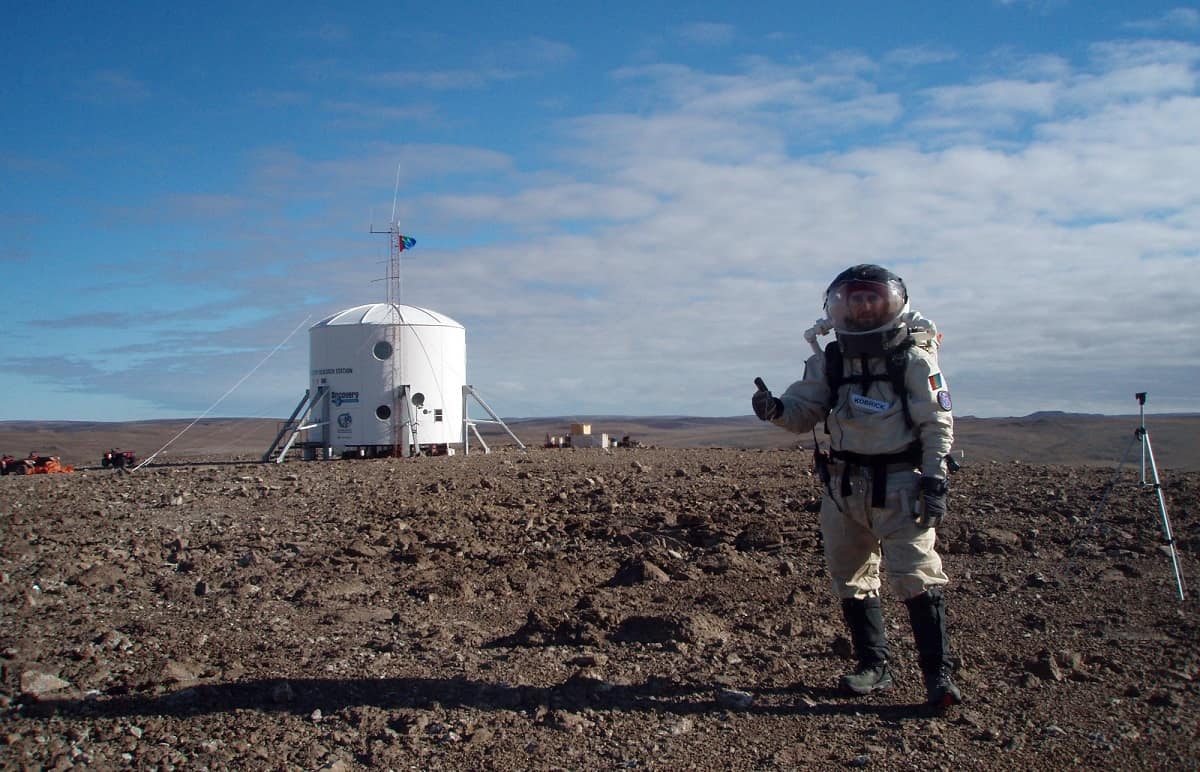Embry-Riddle Professor Heads to Mars Analog to Help Improve Astronaut Efficiency and Reduce Exposure

As NASA and others look to return humans to the Moon for longer durations, lunar dust remains an industry concern.
Apollo mission crew members described the dust as similar to sandpaper, having a texture like graphite and scent similar to gunpowder, causing throat and skin irritation, and respiratory issues. The extreme abrasiveness of the dust was reported to eat through layers of gloves and parts of the astronauts’ spacesuits.
Research by an Embry-Riddle Aeronautical University professor hopes to reduce this risk when astronauts and equipment used in space are exposed to this type of hazard. Minimizing the coverage of lunar dust is just one of the many research experiments Dr. Ryan Kobrick, assistant professor of Spaceflight Operations for Embry-Riddle’s Daytona Beach Campus, will be conducting at the Mars Desert Research Station (MDRS) in Utah starting at the end of January. The space analog facility was established in 2001 by the Mars Society, a space-advocacy nonprofit organization dedicated to promoting the human exploration and settlement of the planet Mars.
As mission commander on the International Space University’s six-person alumni MDRS Crew 188, Kobrick will be in the two-story, eight-meter diameter cylindrical habitat for two weeks, and will be involved in experiments studying everything from planetary dust and spacesuit mobility to enhancing the amount of work that can be conducted outside the spacecraft.
The lunar dust project, which Kobrick is conducting in collaboration with NASA’s Glenn Research Center, will measure how much dust gets into the habitat after an extravehicular activity (EVA), or surface excursion. He will also test new equipment used to collect the dust. Located in the dry desert region of southern Utah, MDRS lends itself to such research as it can become a very dusty operational environment, Kobrick said.
“Lunar dust is a health and safety concern that needs to be studied, including looking at the design of the airlock [which is inside the middeck of the spacecraft's pressurized crew cabin where astronauts get dressed for their spacewalks] and how spacesuits might need to be modified,” Kobrick said. “This research is important for an astronaut’s health when they are traveling to or living on a planetary surface.”
Kobrick and team will conduct EVAs outside the habitat in simulated spacesuits for additional research, including measuring the distances astronauts travel to perform various tasks and how much energy they exert. The biometrics and other human performance data gathered will be used to identify energy limitations, improve efficiency and lead to technology upgrades.
“The idea is also to come up with a standardized set of measurements to be used at Mars simulations around the world,” he said.
During the mission, Kobrick, who is also principal investigator of Embry-Riddle’s S.U.I.T. (Spacesuit Utilization of Innovative Technology) Laboratory, will be in communication with his students, who are assisting with various data collection needs.
Nick Lopac, a sophomore majoring in Spaceflight Operations and lead technician of the S.U.I.T. Lab, is grateful for the opportunity to be involved in the research while helping to solve real problems that astronauts would face.
“My involvement with the S.U.I.T. Lab as a freshman and sophomore at Embry-Riddle has brought me invaluable opportunities,” Lopac said. “I have been able to combine my personal skills and passion for space with work that exposes me to the challenges and rewards of scientific research.”
Kobrick will also be riding ATVs in the dusty desert environment and collecting various field samples to test the wear and tear on a new outer-layer space glove by Final Frontier Design, which is developing a new spacesuit and other garments for astronauts.
Range of motion and other spacesuit mobility tests will be conducted with video analysis to aid in new designs performance metrics for spacesuits.
MDRS Crew 188 will also do live video calls with crews in Oman and Israel who are doing similar simulations and field testing in preparation for trips to Mars. The teams will share their experiences with each other in a Mars-to-Mars-to-Mars connection.
This is Kobrick’s sixth Mars analog mission. He said this type of research and future explorations in space are important not only to learn about other planets, but to ensure Earth’s future resources.
“This is about the future and looking at where we are going, but also protecting where we are now,” Kobrick said. “When humans go to extreme environments like Mars and the Moon, we learn more about ourselves and the use of technology, which translates into spinoffs on Earth. That helps people around the world live better lives.”

 Deborah Circelli
Deborah Circelli